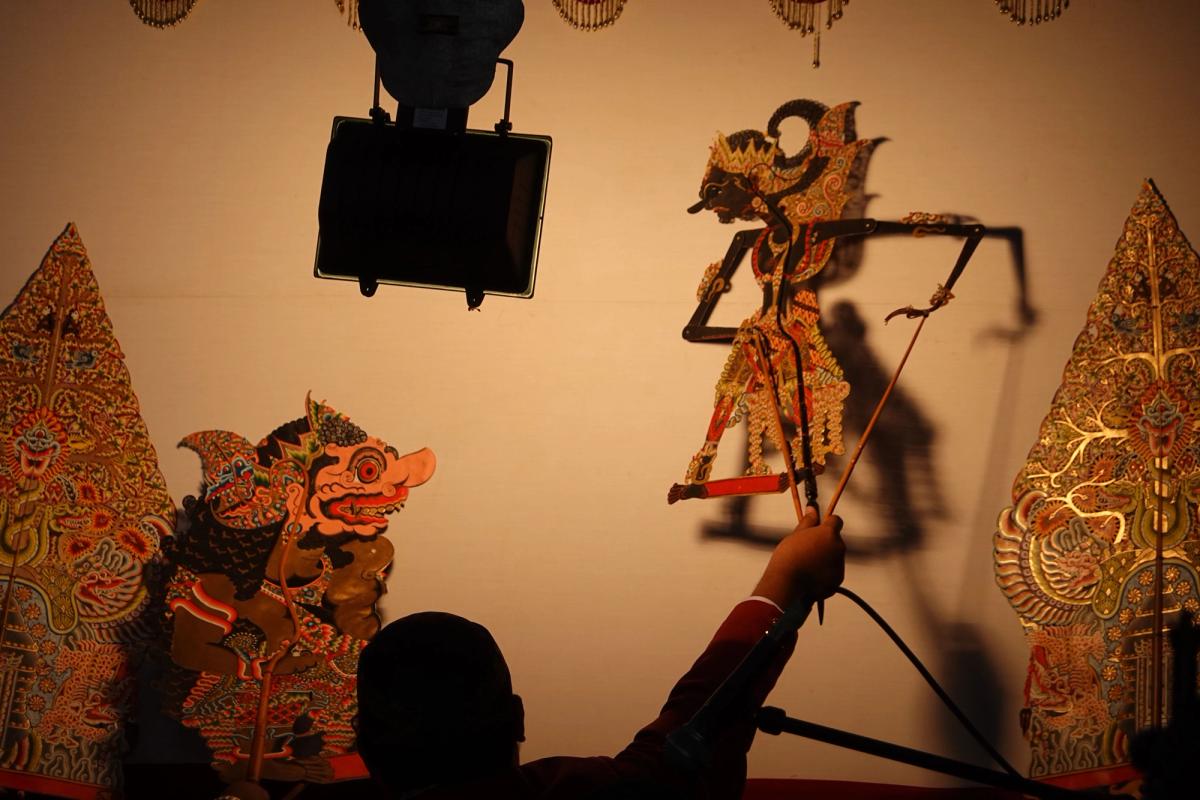SCOTT SIMON, HOST:
Politics is easy. Comedy is hard. The political landscape has changed over the last few weeks with President Biden out of the race, Kamala Harris in and Donald Trump making new charges. Pundits, pollsters and opinionators have all had to adjust. What about topical comedians? Conveniently this week, we are near the cauldron of improvisational comedy, Chicago's Second City, where so many comic talents have been honed - Mike Nichols and Elaine May, John Belushi, Dan Aykroyd, Bill Murray, Gilda Radner.
(SOUNDBITE OF ARCHIVED RECORDING)
UNIDENTIFIED PERSON #1: Tina Fey, Keegan-Michael Key, Sam Richardson, Chris Farley - are those familiar names to you? Yeah, OK, great.
SIMON: Everybody's a comedian. We sat down with two current cast members - Adonis Holmes and Andy Bolduc - to ask, how do they adjust?
Look, five weeks ago, everything was all set up. Everybody knew what was going to happen, right? So you would be getting suggestions for improv. So now everything has changed, right?
ANDY BOLDUC: Well, to be totally honest, we don't get that many political suggestions...
ADONIS HOLMES: At all.
BOLDUC: ...At our shows.
SIMON: So what's on the minds of your audiences nowadays?
BOLDUC: I think they don't want to hear too much about politics at our shows.
SIMON: Well, they - I mean, they do come here.
BOLDUC: The day-to-day topical news cycle, though...
HOLMES: Yeah.
BOLDUC: ...That isn't something that I think they are looking for us to address.
HOLMES: Yeah.
BOLDUC: Maybe if something big just happened, that might come up, but outside of that, there's so many sources for you to get comedy on these subjects now.
HOLMES: Yeah, there's so many.
BOLDUC: There's so much on the internet. You got "The Daily Show." You have other shows that, like, address that on, like, a day-to-day topical basis.
HOLMES: Yeah, for sure. And I think one of the historic things about Second City - this building kind of always did, like, a step-back approach when it comes to those larger geopolitical issues.
BOLDUC: Looking at it from sort of, like, a sociocultural perspective...
HOLMES: Yeah.
BOLDUC: ...How would a couple in their bedroom...
HOLMES: Talk...
BOLDUC: ...Talking about this...
HOLMES: ...And digest this.
BOLDUC: ...Address it, rather than us actually playing Trump and Biden.
SIMON: When you ask for audience suggestions, I'm just going to guess you get...
BOLDUC: Yeah.
SIMON: ...You get the name of a former president a lot.
BOLDUC: Trump does come up.
HOLMES: Yeah.
BOLDUC: And...
HOLMES: We shut it down.
SIMON: Yeah.
BOLDUC: Usually we shut it down. I'm not afraid to take it, but there are - the reason I wouldn't take Trump...
HOLMES: Yeah.
BOLDUC: ...This is the main reason - is because everybody knows who has the best Trump impressions, and it's unfortunately not somebody in our cast right now.
SIMON: (Laughter).
BOLDUC: We could struggle through it, but James Austin Johnson has an incredible Trump impression.
HOLMES: Yeah.
BOLDUC: And I think if you've seen "SNL," you're going to go, well, his is better.
SIMON: What are you going to do the first night somebody calls out JD Vance?
BOLDUC: JD Vance is more funny. I would be...
HOLMES: Yeah, that's fine.
BOLDUC: I would feel good...
HOLMES: That's fine.
BOLDUC: ...Touching JD Vance.
HOLMES: Yes. Yes.
BOLDUC: I think I would do a scene about putting on the eyeliner.
HOLMES: For sure.
SIMON: What happens when somebody shouts out Tim Walz?
BOLDUC: I'd be like, OK, what does everybody know about this guy?
HOLMES: Yeah.
BOLDUC: Do we all know who he is yet?
HOLMES: Truly.
BOLDUC: Yeah.
HOLMES: Yeah. Who is this guy? I know he's from Minnesota. The...
BOLDUC: We know he likes white-guy tacos.
HOLMES: Truly. They love - yes. Present him as very cool uncle. So, yeah, I'd probably go straight to Minnesota, truly.
SIMON: You realize - and it could even be tonight - somebody is going to shout Kamala Harris.
HOLMES: I will say our cast member Adisa - she's been...
BOLDUC: Yeah.
HOLMES: ...Working on her Kamala for the past few months, and she's perfecting the laugh, so she'll probably go straight to that laugh.
SIMON: What makes Chicago so funny?
HOLMES: I think about this all the time. But it just seems to me, especially in the early aughts, people, specifically improvisers, really cared about building something monumental together. Even if it was ephemeral and temporary, like, they really cared about building something for themselves. They didn't really force the notion that comedy has to be political. It's just like, oh, comedy is just naturally political. People being able to laugh at things naturally comes off as a privilege, you know? Just, like - and I'm saying this as a queer Black person, you know? Like, historically, I haven't been able to laugh at a lot of things that most people are able to laugh at.
BOLDUC: And I would say Chicago's affordable in a way that...
HOLMES: Yeah. That's true.
BOLDUC: ...Few other large American cities are anymore.
HOLMES: Yeah.
BOLDUC: So you can be an artist here without the same degree of monthly rent pressure...
HOLMES: Truly.
BOLDUC: ...That you might feel in New York or LA or much of the East Coast - really, so many American cities right now.
SIMON: What keeps you going?
BOLDUC: I think the possibility of danger - not just being dangerous, but the possibility of failure. Risk is what I really enjoy, the chance that the audience won't like what I'm doing, and so the reward when they do is enormous.
SIMON: Like, if they don't like it, they just don't laugh.
BOLDUC: Yes. It is incredibly painful to feel the cold judgment of the audience - yeah, particularly when you've taken a big swing...
HOLMES: Yeah.
BOLDUC: ...And you can feel - you can hear the width all the way across the room.
HOLMES: And then what keeps me going in those moments is typically in those moments, the cast is enjoying that.
BOLDUC: Yeah. That's the thing. We have the memory of elephants...
HOLMES: Truly.
BOLDUC: ...For each other's failures.
SIMON: Adonis Holmes and Andy Bolduc of Chicago's Second City, thanks so much for being with us.
BOLDUC: Thank you for having us.
HOLMES: Thanks for having us.
SIMON: I don't want to put anyone on the spot, but we do have somebody in our crew who does outstanding impressions...
HOLMES: Uh-oh.
SIMON: ...Ryan Benk, who is our producer. I wonder if you could just size him up for us.
BOLDUC: Oh, absolutely.
HOLMES: Can you do Pete? Can you do Buttigieg?(Impersonating Pete Buttigieg) He's like, really wants to get his point across like this. I'm working on it. I'm working on it.
RYAN BENK, BYLINE: (Impersonating Barack Obama) I think Pete Buttigieg is...
HOLMES: That's pretty good.
BENK: (Impersonating Barack Obama) ...The gay Barack.
BOLDUC: Exactly. He's trying to be Barack Obama.
BENK: He could be Barry Buttigieg.
BOLDUC: (Impersonating Donald Trump) Nothing but the greatest. I've never heard an impression that great, Scott. Scott impersonates a journalist every week. That's what he does.
Copyright © 2024 NPR. All rights reserved. Visit our website terms of use and permissions pages at www.npr.org for further information.
NPR transcripts are created on a rush deadline by an NPR contractor. This text may not be in its final form and may be updated or revised in the future. Accuracy and availability may vary. The authoritative record of NPR’s programming is the audio record.









